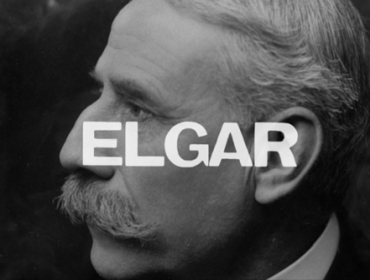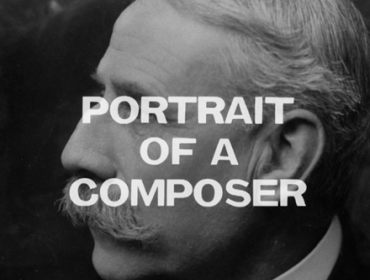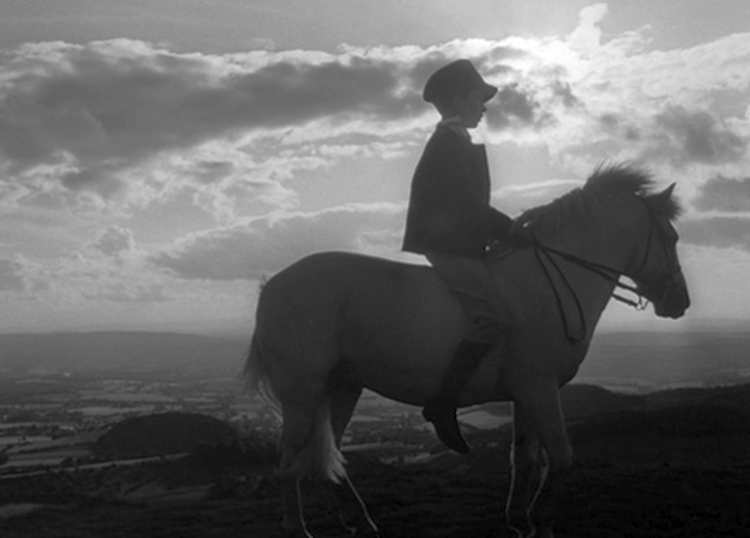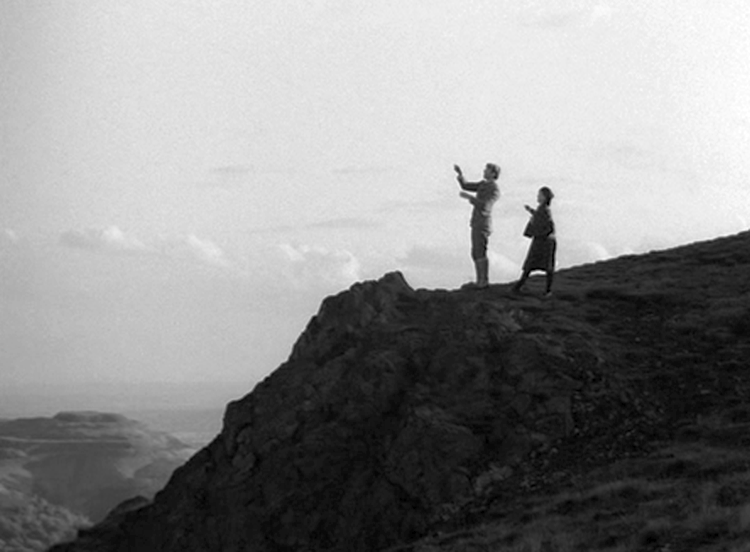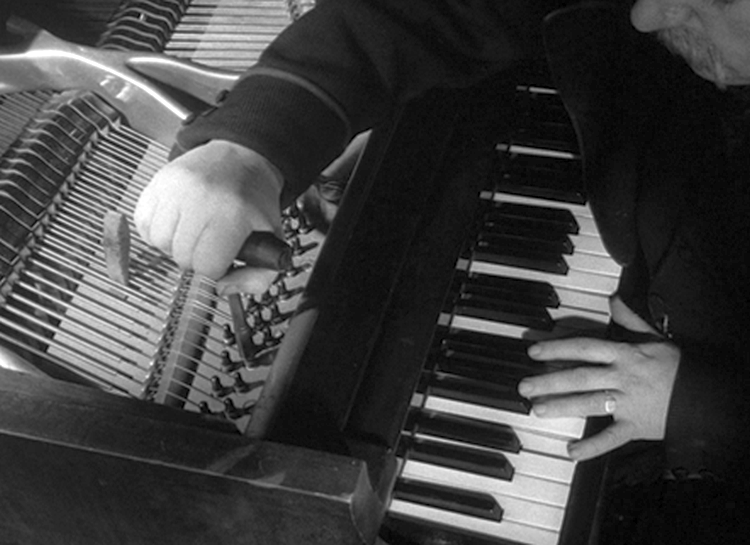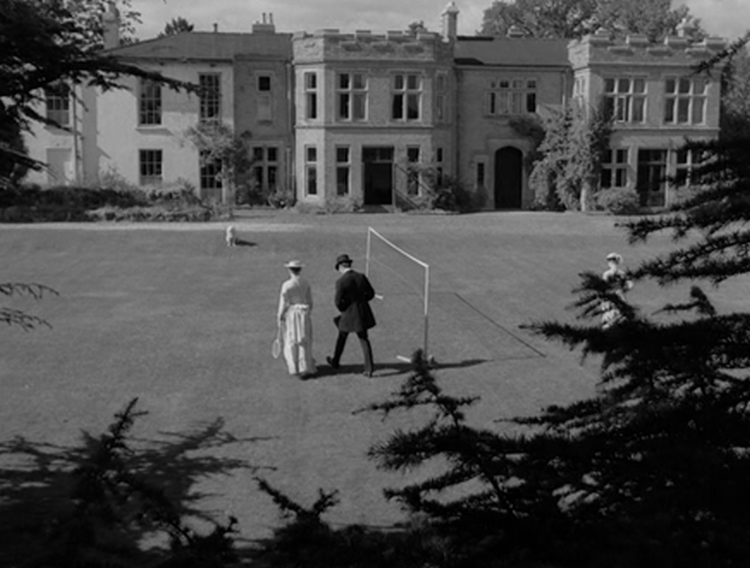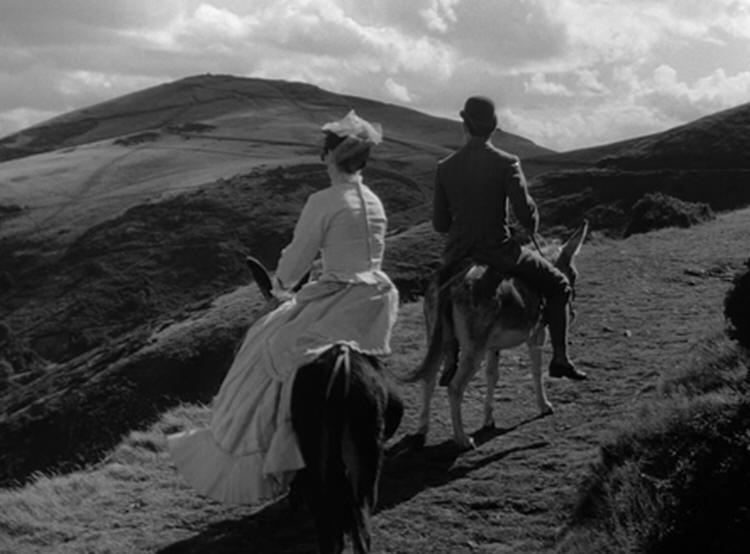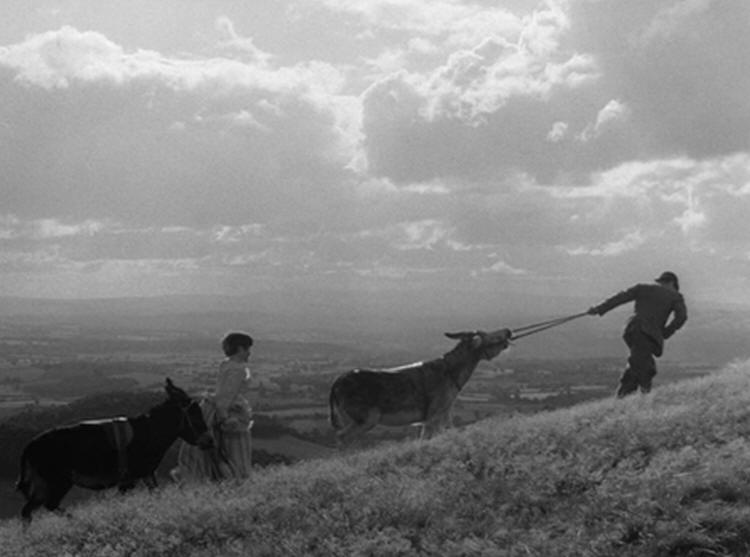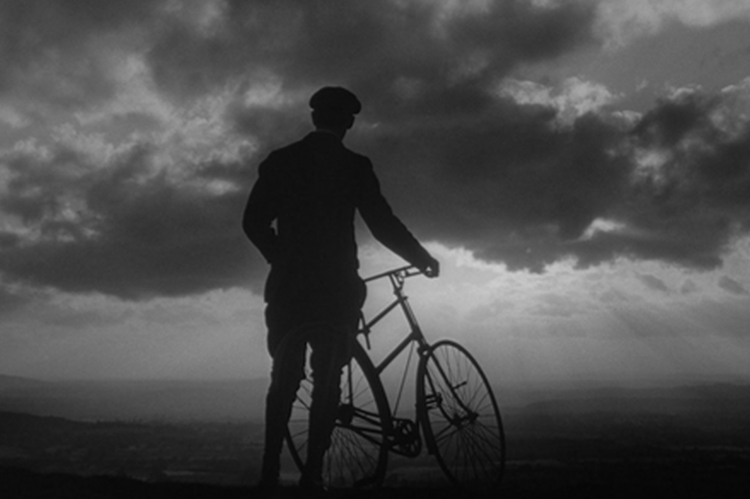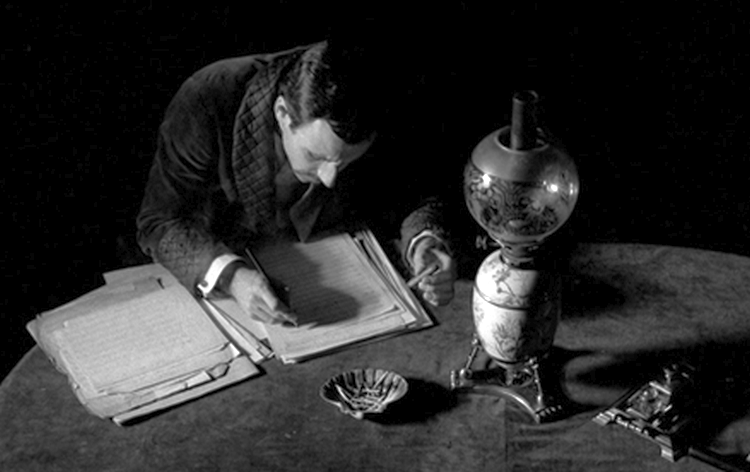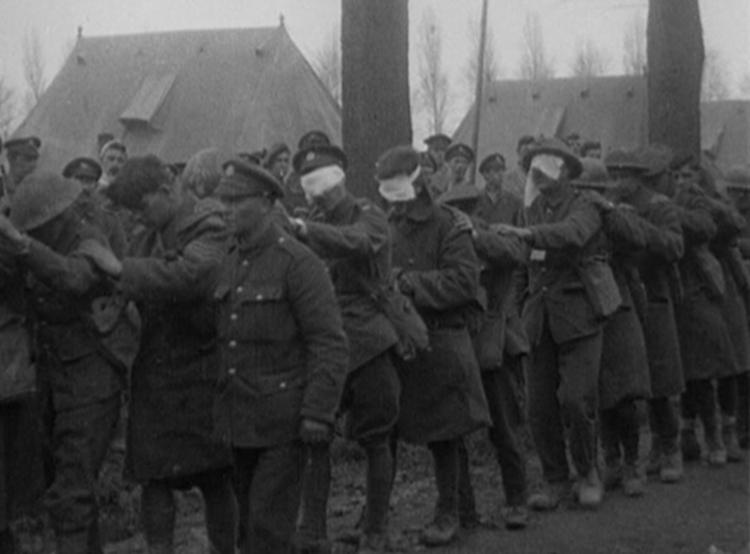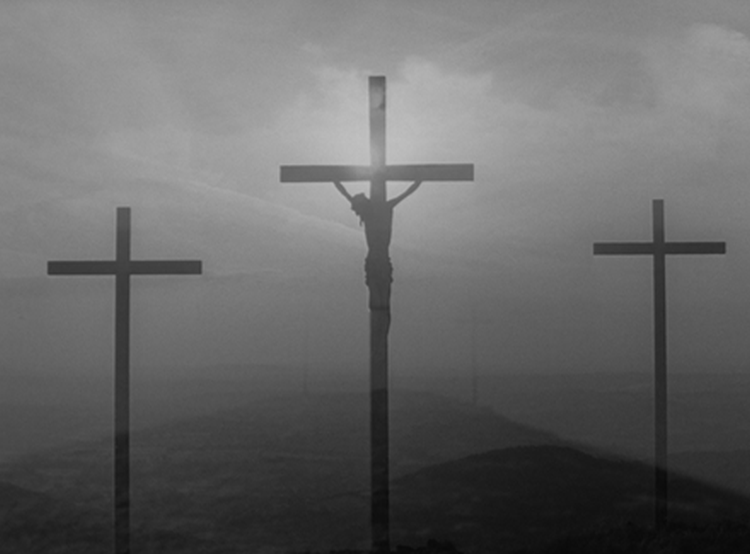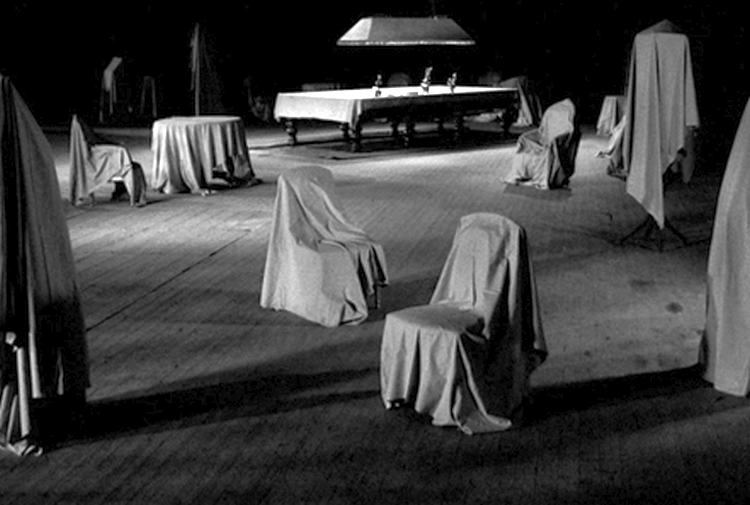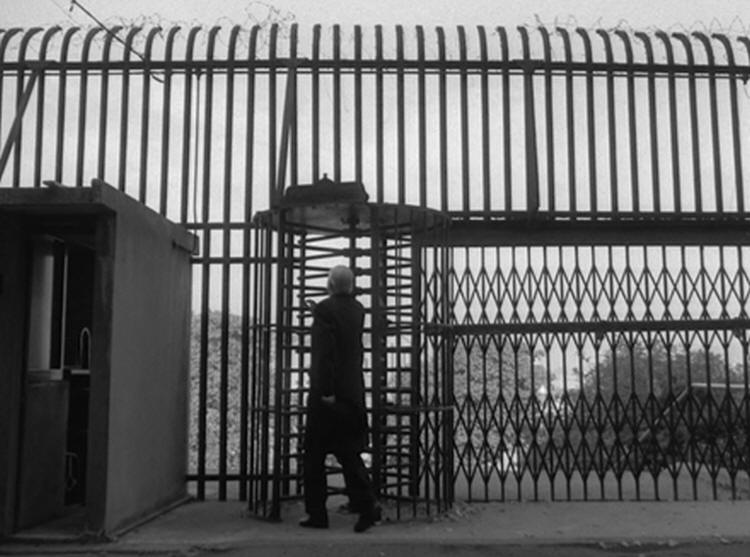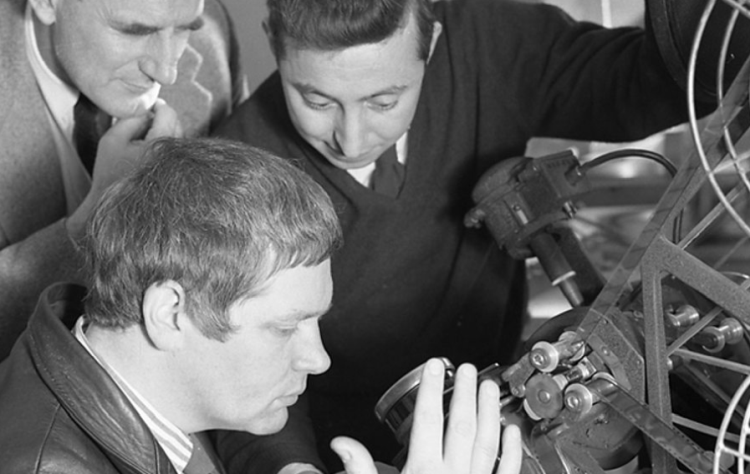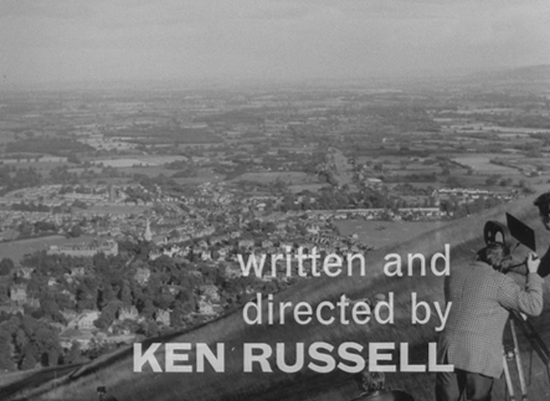|
"There are images that stick in your brain
forever" Alan Parker Elgar: Portrait of a Composer from 1962. For the 100th edition of Monitor something special was required. Russell came up with the documentary about the composer Elgar which became the most loved television programme in the 1960s. "A straightforward documentary approach was abandoned, in favour of what is now known as docu-drama, with actors taking the parts of Elgar and his family. However, there was no dialogue and only a dry commentary from Huw Wheldon. Instead Russell filled the soundtrack with Elgar's music and created a serious yet expressive film that has become a classic of its type... Russell died in 2011, but today it is standard practice for documentaries to contain the dramatizations of the sort that he pioneered". (History of the BBC, from BBC website here). The film has three segments, the boy Elgar learning music without tuition, the young Elgar struggling to survive, and the feted Sir Edward Elgar. Not only did it establish Russell as a film-maker - it led to him directing his first cinema film French Dressing - but it also started a revival of Elgar, from being totally neglected and regarded as out-of-date (similar to Kipling now) to one of the best loved English composers. Opening with the boy Elgar riding a white horse over the Malvern Hills, the film couldn't fail to win the audience over. In one scene Elgar is shown flying a kite, Ken had to prove it really happened before it was included (from Sir Huge by Paul Ferris, ch 8).
The conventional documentary style (talking heads and empty buildings) is abandoned for a film which gives a feeling for Elgar and how he lived and why he composed. Using three actors to play Elgar at various ages was controversial within the BBC- it was felt actors should not appear in documentaries. For Elgar they were not allowed to speak in the film.
Elgar's father was a piano tuner, but too poor to pay for tuition for the young Elgar.
The quintet playing Elgar.
Because actors were not allowed to talk, the courtship of his future wife has to be filmed from a distance.
Anything closer between the couple was filmed from behind. All restrictions imposed on Russell, but he still comes up with intimacy- both on donkeys on the hills he rode as a child- and beautiful imagery.
I guess the donkey was not meant to be so difficult, but turning a problem to your advantage makes great filming.
The iconic image but now with a bicycle. As Elgar goes through life he will use donkeys, a bike and a car to ride the hills.
Controversially Russell played the patriotic Land of Hope and Glory to scenes of First World War carnage as the blind lead the blind. Despite this the film was one of the BBC's more popular films, and regularly repeated. "... we are exposed to contrapuntal images of blinded World War One mustard gas victims followed by accumulating shots of graves that undermine the jingoistic connotations that have been heaped onto the 'Land of Hope and Glory tune'. These techniques recall the work of Sergei Eisenstein, a thinker and film practitioner whose ideas have much to offer in the analysis of Russell's films and the critical tirades that plague them" (Kay Dickinson, Off Key, 2008, chapter 3).
The Catholicism of Elgar and Russell comes over. "I think being a Catholic myself has definitely given me an empathy with Elgar's music. Even when he stopped writing those religious cantatas, that doesn't mean to say religion wasn't in his music. I certainly think it's there in the Second Symphony... when I first took the idea of doing a film on Elgar. Huw [Wheldon] say 'Hmmm, well cradle to the grave, rags to riches. Yes, where's the man's backbone?' And I said, 'Well the backbone is the Malvern Hills. And it's in his music.' And Huw said, 'That's the theme, Russell, the hills" (BBC Music, June 2007).
After his wife died Elgar closed down part of the house. Ken Russell would use the imagery of the drapes later in The Lair of the White Worm.
The film led to a revival of Elgar's works and the covers of LPs would often use the imagery of Elgar and his horse and the Malvern Hills. "Although Elgar had perhaps seemed a dusty anachronism to many in the midcentury, Russell's film breathed new life into his oeuvre" (Kay Dickinson, Off Key, 2008, chapter 1). One of the landmarks of television (Russell's Song of Summer is another) alongside Ken Loach (Cathy Come Home). Russell later tried to raise finance for an Elgar film but didn't succeed. 40 years on he made a new Elgar film for Melvyn Bragg. The music includes:
Russell at front, Huw Wheldon above left (from tribute film Imagine, on BBC website History of the BBC, Monitor - Elgar by Ken Russell here). The boy Elgar is not credited but Ken says he was a local boy, the young Elgar was played by Peter Brett (a friend) and the elderly Elgar by George McGrath (from dvd commentary). Peter Brett would later write the screenplay for Ken's French Dressing. The editor is Alan Tyrer and sound is by Russell regular John Murphy. The script is by Russell, with Huw Wheldon writing and speaking the commentary. Ken Higgins is the photographer, his talent and Russell's imagery is stunning. Ken says filming took three weeks or less, in the Malvern Hills and occasionally in London. The crew consisted of Ken, the production assistant, the cameraman and an assistant. As there was no dialogue there was no sound man (from DVD commentary).
"Most television dates rapidly, but over forty years on [now more than 60], Elgar is still startlingly fresh and inventive. Even the black-and-white photography looks like a deliberate artistic choice as opposed to a then-universal convention" (Michael Brooke, British Film Institute BFI ScreenOnline, here). All images from the film as well as the LP cover. |
